The Asphalt Pit of La Brea
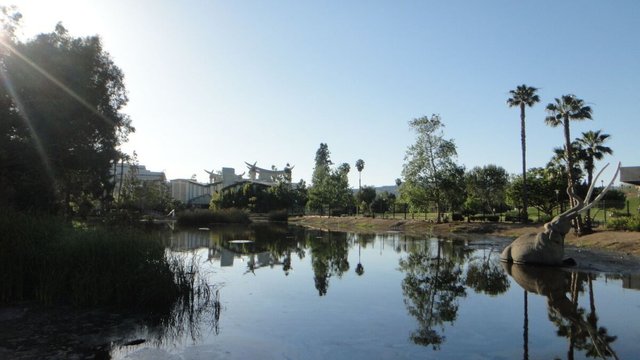
Chapter V of Immanuel Velikovsky’s Earth in Upheaval is entitled Tidal Wave. In the six sections of this chapter Velikovsky reviews the scientific evidence for catastrophic floods and mega-tsunamis in recent history. The fifth section, The Asphalt Pit of La Brea, takes us to one of the wonders of the natural world, the La Brea Tar Pits in Los Angeles.
At Rancho La Brea, once on the western outskirts of Los Angeles, and at present in the immediate neighborhood of the luxurious shopping center of that city, bones of extinct animals and of still living species are found in abundance in asphalt mixed with clay and sand. In 1875 some fossil remains of this bituminous deposit were described for the first time. By then thousands of tons of asphalt had already been removed and shipped to San Francisco for roofing and paving. (Velikovsky 59)
The asphalt (tar, pitch, bitumen) is formed from crude oil, which seeps up from a large petroleum reservoir known as the Salt Lake Oil Field. At the surface, the oil forms pools and turns into asphalt as the lighter fractions of the petroleum biodegrade or evaporate. It is thought that this seepage has been happening for tens of thousands of years. Over the course of time, many animals wandered into the pits and were trapped by the tar. As they sank below the surface, the asphalt soaked into their bones, helping to fossilize and preserve them. Since 1901, when excavations began, more than a million bones have been recovered from La Brea, comprising over 460 animal species and 159 plant species.
The animals trapped at La Brea are believed to have lived between 50,000 and 10,000 years ago—the Late Pleistocene Age—during the Wisconsin Glaciation. Among the large mammals recovered from the pits, dire wolves are the commonest, followed by sabre-toothed cats and coyotes. Mastodons and mammoths have also been recovered from the pits, as well as wolves, bears, bison, camels, horses and sloths. The remains of only one human—a female known as La Brea Woman—have also been found.
Velikovsky cites four sources in this section, three scientists and one historian: J C Merriam, R S Lull, George McCready Price and Charles-Étienne Brasseur de Bourbourg. The first two and the fourth are new sources. We have already met McCready Price, the Canadian geologist who was cited in The Aquatic Graveyards (Chapter 2) and Whales in the Mountains (Chapter 4). Let’s take a brief look at each of these individuals.
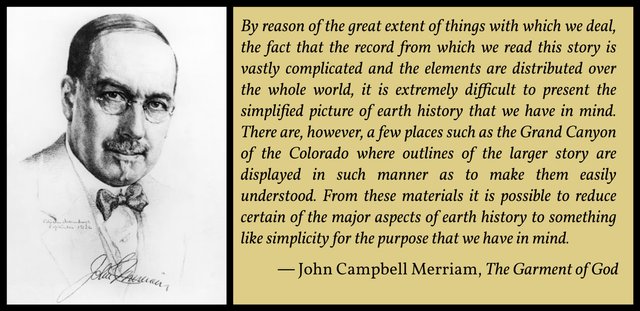
John Campbell Merriam
John Campbell Merriam was an American palaeontologist best known for his work at La Brea. As a young man growing up in Iowa in the 1880s, Merriam developed an amateur interest in palaeontology. In 1886, when he was just sixteen, he received a Bachelor of Science degree at Lenox College in his hometown of Hopkinton. He subsequently studied geology and botany at the University of California under Joseph Le Conte and E L Greene. In the 1890s he moved to Munich, Germany, to study palaeontology under Karl von Zittel. In 1894, after receiving his doctorate in vertebrate palaeontology from the University of Munich, he returned to Berkeley, California, which was to be his principal home for about half a century.
While an instructor at the University of California he published many papers on both vertebrate and invertebrate palaeontology, taking a special interest in fossil reptiles. In 1908 his memoir on the Triassic Ichthyosauria appeared as the very first issue of the Memoirs of the University of California. But by then his interests had already shifted:
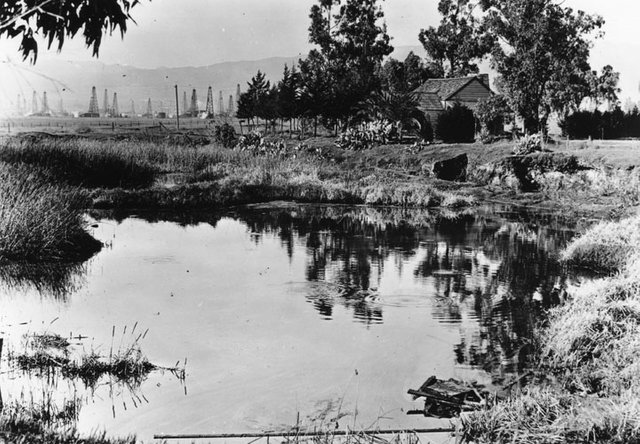
Even before completion of the work on fossil reptiles, his attention turned more strongly toward the study of fossil mammals, western Tertiary mammalian faunas, and early human history. There followed many papers which relate to these fossil assemblages, correlation studies, and to the deposits and faunas of Rancho La Brea. They were published for the most part during the greatest productive period of his research career at the University from 1900 to 1919 and may be regarded as his most significant contributions to paleontology and historical geology. (Stock 212)
During these years, Merriam published many papers on the La Brea fossils, including one popular piece for Harper’s Weekly entitled A Death-Trap which Antedates Adam and Eve: The Discovery of a Californian Tar-Swamp that Holds the Bones of Extinct Monsters (1909). In 1911-12, the second issue of the Memoirs of the University of California comprised his paper The Fauna of Rancho La Brea, from which Velikovsky quotes in this section of Earth in Upheaval.
Merriam was by no means a catastrophist. His papers on the La Brea assemblage are consistently uniformitarian. He was, however, a religious man. In 1943, just two years before he died, he wrote The Garment of God, a short rumination on the impact of nature on human experience. The title is taken from a passage in Thomas Carlye’s satirical work Sartor Resartus, in which Carlyle’s narrator Teufelsdröckh questions the reality of Nature, illustrating his ideas with a quotation from the opening scene of Goethe’s Faust:
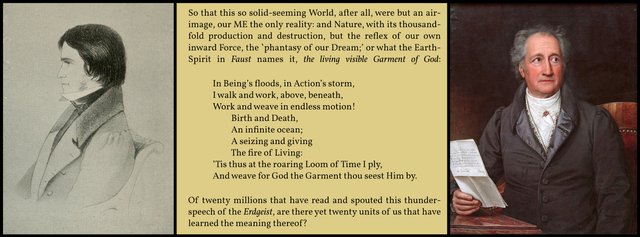
Richard Swann Lull
Like Merriam, Richard Swann Lull was an American palaeontologist. He is best remembered for advocating a non-Darwinian theory of evolution. The son of a naval officer, Lull’s ambitions to follow in his father’s footsteps were thwarted by deafness. He turned instead to academia. He was educated at Rutgers College in New Jersey, where he received a BSc and an MSc in zoology, and at Columbia University in New York, where he took his doctorate in vertebrate paleontology in 1906. In the same year he was appointed Assistant Professor of Vertebrate Paleontology at Yale University, where he remained until his death more than fifty years later. For sixteen years, he was director of Yale’s Peabody Museum of Natural History and editor of the American Journal of Science. Tall and striking in appearance, Lull was a gifted speaker and an accomplished sportsman.
His controversial theory of evolution is outlined in his Organic Evolution, a comprehensive history of the field, first published in 1917. The theory is a species of orthogenesis:
Orthogenesis (Gr. ὀρθός, straight, and γένεσις, production) is the theory that variations and hence evolutionary change occur along certain definite lines impelled by laws of which we know not the cause. This theory has arisen mainly from the difficulty of explaining the beginnings of advantageous modifications or of new organs by the selection of individual variations occurring in every direction of change. It is evident that unless a structure appealed at once in a degree of development to give it a “selection value,” it would be difficult to account for its beginning, but the very teaching of the Neo-Darwinians postulates the selection of minute Darwinian variations and not such saltations as the idea just advanced would imply. (Lull 1921:175)
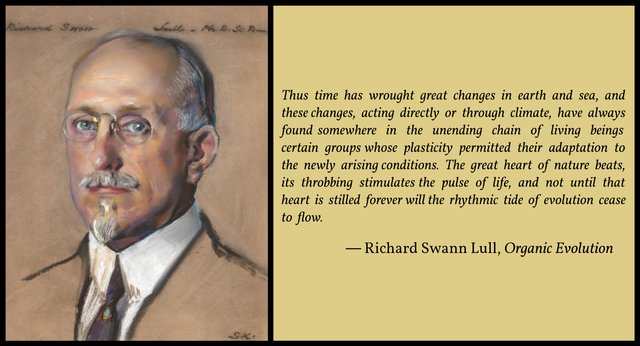
Lull referenced the Irish elk in support of this theory:
The deer are the most familiar recent instance of spinescence in the bony growths known as antlers which surmount the brow. These antlers, which are periodically shed, increase annually in weight, complexity, and number of points until the deer is old, when they begin to simplify again. An interesting recapitulation is shown, for the antlers of a young animal are comparable to those of fully adult Miocene deer, those of somewhat later age with those of the deer of the Pliocene, while a “stag royal” in his prime bears antlers comparable to those of the Pleistocene and Recent deer. Moreover, as one would expect, the deer which attained the maximum development of horns, the great Irish stag or “elk,” is now extinct, and we know of no other reason for its extinction than the racial senescence which the antlers imply. The not infrequent interlocking of the horns of two fighting bucks, resulting in their destruction by starvation or the attacks of other animals, shows that the point of greatest utility as weapons of defense and offense has apparently been exceeded, so that the structures are an actual menace to their possessor. (Lull 1921:222-223)
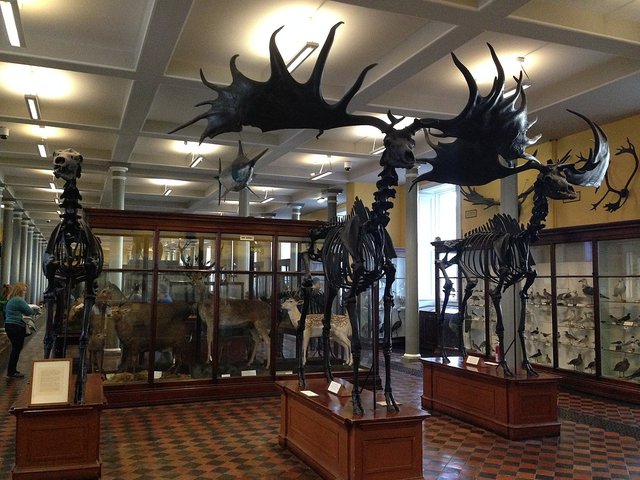
Darwinists counter this argument by appealing to the theory of allometry. According to this theory, if natural selection favoured larger deer, then relatively larger antlers would also be selected as a correlated result. In the 1970s, Stephen Jay Gould, who confirmed an allometric relation between the size of a deer’s body and the size of its antlers, suggested that the evolutionary correlation between the two may have run in the other direction: larger antlers were selected on account of their importance in courtship rituals, and larger body-size was selected as a correlated result (Gould 87-89). The extinction of the species, he suggests, was due to the failure of the animal to adapt to the rapid climate change that overtook it at the end of the Ice Age:
If the antlers were adaptive, why did the Irish Elk become extinct (at least in Ireland)? The probable answer to this old dilemma is, I am afraid, rather commonplace. The giant deer flourished in Ireland for only the briefest of times—during the so-called Alleröd interstadial phase at the end of the last glaciation. This period, a minor warm phase between two colder epochs, lasted for about 1,000 years, from 12,000 to 11,000 years before the present. (The Irish Elk had migrated to Ireland during the previous glacial phase when lower sea levels established a connection between Ireland and continental Europe.) Although it was well adapted to the grassy, sparsely wooded, open country of Alleröd times, it apparently could not adapt either to the subarctic tundra that followed in the next cold epoch or to the heavy forestation that developed after the final retreat of the ice sheet. (Gould 89-90)
The problem with this argument is that the so-called Irish elk was not uniqiue to Ireland. As Gould himself points out, it flourished as far east as Siberia and China and as far south as North Africa (Gould 11). The Irish populations may have been driven to extinction by unfavourable conditions which they could not escape, but the continental populations could easily have migrated to more favourable climes.
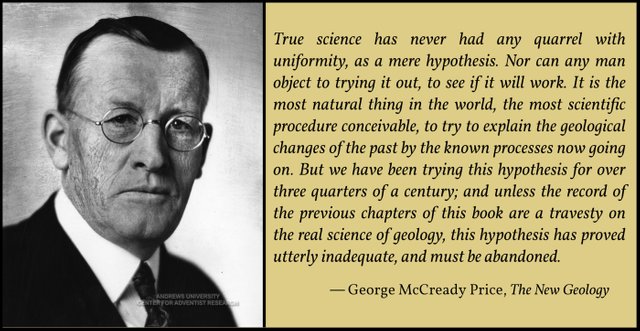
George McCready Price
George McCready Price was a Seventh-Day Adventist and one of the pioneers of creation science. He wrote extensively on geology and evolution and his books have recently come into vogue in the Creationist community. Born in Canada in 1870, Price received only elementary training in the sciences before becoming in succession a teacher, a writer, a book-seller, a construction worker and a handyman. It was during these years that he wrote his first two books, Outlines of Modern Christianity and Modern Science (1902) and Illogical Geology: The Weakest Point in the Evolution Theory (1906). In the latter, Price offered “to give a thousand dollars to any one who will, in the face of the facts here presented, show me how to prove that one kind of fossil is older than another” (Price 1906:9)
Between 1907 and 1938 Price taught at a series of Adventist schools and colleges in the US and England. Two of these, the College of Medical Evangelists in Loma Linda, California, and Pacific Union College in Napa Valley, California, awarded him a BA and an MA respectively. These are widely regarded as honorary degrees, as Price was not required to take any courses or to pass any exams to receive them.
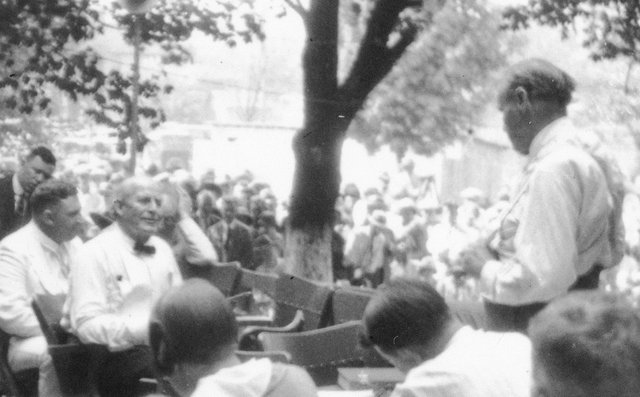
Throughout his life Price continued to write extensively on a variety of subjects. Between 1902 and 1963 he published almost three dozen books. In 1925, his work was cited heavily by William Jennings Bryan in the infamous Scopes Trial, though Price himself did not give evidence. He was teaching in England at the time and even advised Bryan to avoid science if at all possible. At one point during the trial, defence counsel Clarence Darrow said to Bryan:
You mentioned Price because he is the only human being in the world so far as you know that signs his name as a geologist that believes like you do ... a man that every scientist in this country knows is a montebank [sic] and a pretender and not a geologist at all. (Scopes 297)
This is probably how Price is seen today by the majority of mainstream scientists.
In 1943, Price returned to Loma Linda, California, where he had taught more than forty years before. He died there in 1963 at the age of 92. He left behind a number of unfinished works, three of which were published postumously.
George McCready Price was one of several scientists who were invited to read early drafts of various chapters of Earth in Upheaval. Velikovsky, however, does not tell us what his opinion of the work was:
Between this octogenarian, author of several books on geology written from the fundamentalist point of view, and myself, there are some points of agreement and as many of disagreement. The main one among the latter is that while Price is opposed to the very theory of evolution and is supported in his disbelief by the fact that since the scientific age no new animal species have been observed to emerge, I offer in the concluding chapters of this book (“Extinction” and “Cataclysmic Evolution”) a radical solution of the problem. (Velikovsky vi-vii)

Charles-Étienne Brasseur de Bourbourg
Charles-Étienne Brasseur de Bourbourg was a French historian, ethnographer, archaeologist and Catholic missionary. He was born in Bourbourg in the north-east of France in 1814. He studied theology and philosophy as a young man in Ghent, and later established a literary reputation for himself in Paris, where he worked as a journalist on a number of political newspapers. He was ordained a Catholic Priest in Rome in 1845. A few months later, he was appointed Professor of Ecclesiastical History at the Seminary of Québec in the Province of Canada. The following year, however, he relocated to Boston, where he acted briefly as the vicar-general of the diocese.
By 1847, he was back in Europe, preparing for the most important undertaking of his life: his missionary work among the natives of Mexico and Central America (1848-63). It was during these years that he wrote his History of the Civilized Nations of Mexico and Central America and translated into French the sacred codex of the Maya known as the Popul-Vuh.
Brasseur’s contributions to the archaeology and historiography of Mesoamerican civilization were immense, but many of his own theories failed to find a sympathic audience. In later years, he became a firm believer in the historicity of Plato’s Atlantis and hypothesized that similarities between the civilizations of ancient Egypt and Mesoamerica were due to their shared Atlantean heritage. He continued to research this field until his death in Nice in 1874, at the age of 59.
Velikovsky was already familiar with the writings of Charles-Étienne Brasseur when he sat down to write Earth in Upheaval. He had had occasion to cite Brasseur on several occasions in his previous book, Worlds in Collision, first published in 1950.
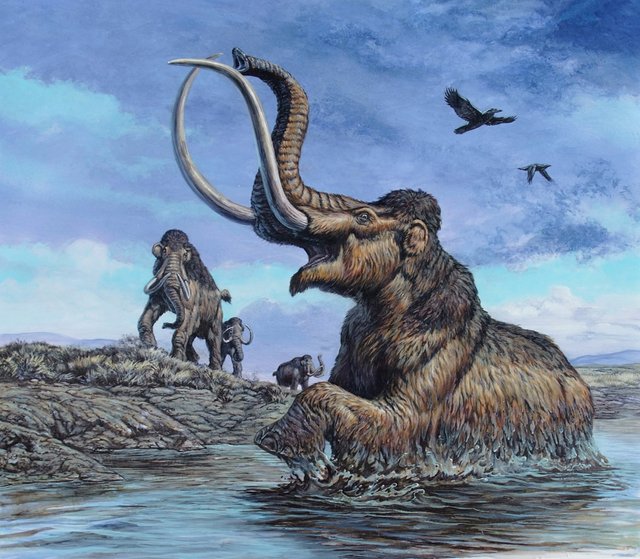
Entrapment or Catastrophe?
The received opinion is that many of the animals whose remains have been excavated from La Brea wandered into the pits inadvertently and became trapped. Predators may also have been lured into the pits to prey on trapped animals, only to become trapped in turn. Velikovsky, however, has contested this opinion on a number of points.
First, the agglomeration of many fossils in a huge crowded mass argues against discrete cases of entrapment spread out over a lengthy period of time:
The animal remains are crowded together in the asphalt pit in an unbelievable agglomeration. In the first excavation carried on by the University of California “a bed of bones was encountered in which the number of saber-tooth and wolf skulls together averaged twenty per cubic yard.” No fewer than seven hundred skulls of the saber-toothed tiger have been recovered. (Velikovsky 60)
Here, Velikovsky quotes from J C Merriam’s The Fauna of Rancho La Brea (1911). Two years before the appearance of this paper, Merriam had made a similar observation in a popular article he wrote for Harper’s Weekly:
The bone deposits are more or less irregular, and are often only small pockets, such as one would expect to find in the most treacherous portion of a tar seep or pool. Bones are in places so numerous as to form a tangled, matted mass, from which it is difficult to extract one specimen without injuring others. The number of individuais is often very large, and of some forms, as of the great sabre-tooth tigers, probably more specimens have already been recovered here than were known previously in the combined museums of the world. (Merriam 1909:11)
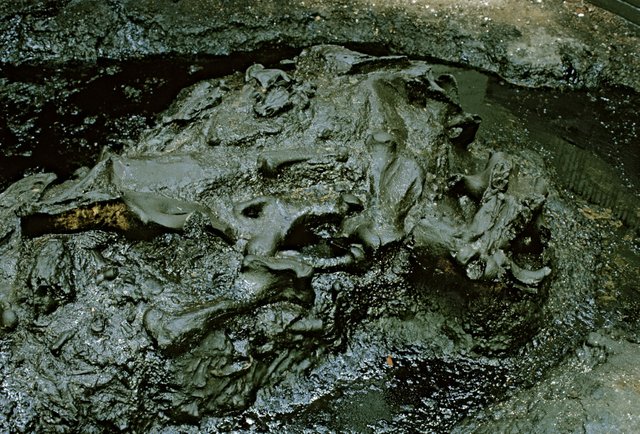
Merriam considered the possibility that the animals had been deposited in the tar pits by water, before ultimately rejecting it. His argument, however, only applies to fluvial deposition by rivers. He never envisaged the possibility of catastrophic megafloods as the depositing agent:
The manner of the accumulation of the skeletons in the tar is quite different from that in nearly all other fossil deposits. The fact that most of the bones are in the asphalt strata, while few or none are present in the beds of pure sand and clay, shows that tar has been the important factor in bringing together the mass of bones. Evidently the remains were not washed together by streams as in many deposits, otherwise they ought to be abundant in other strata also All the evidence points toward the bone beds having been formed through the trapping of living animals in the sticky asphalt.
Illustrations of the way in which animals may be eaught in tar or oil pools are only too common in California to-day, and many examples have been furnished by the existing tar seeps of Rancho La Brea itself. The writer is informed by the proprietor of this ranch that in many instances cattle, sheep, horses, chickens, turkeys. dogs. eats, and other animals have been so completely mired that they were freed only with the greatest difficulty. On the borders of nearly every seep there may usually be seen at the present time the carcass of some animal that has recently fallen a victim, and it is easy to imagine the result of long-continued operation of the tar pools. (Merriam 1909:12)
It is curious that Velikovsky does not quote Price’s explanation of why there is an abundance of remains in the asphalt but a scarcity of them in the surrounding sands and clays:
Some modern animals have tumbled into these pits and have become preserved also; but that the deposit is primarily due to the oil’s having seeped up and preserved a deposit previously there, is proved by the fact that outside the limits of the effects of the tar, the soil is very calcareous, as if originally crammed full of bones likewise, but these bones subsequently decayed, because the tar did not reach them. (Price 1923:579)
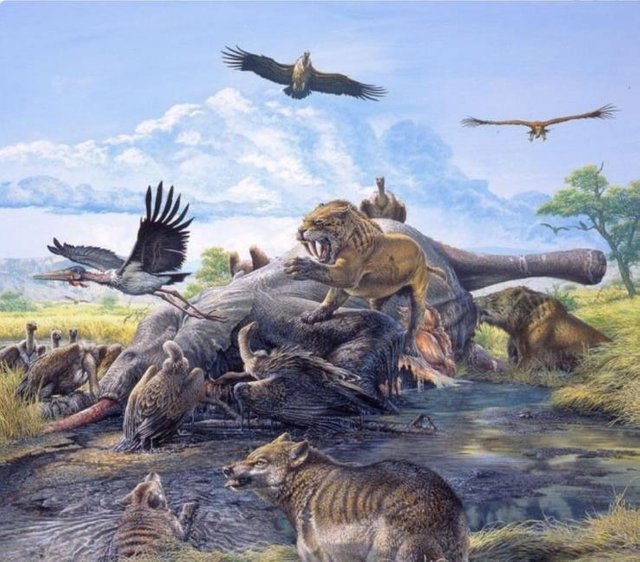
It can hardly be denied that at least some of the victims of the tar pits wandered in of their own accord. But there are two problems with the theory that all or most of the victims were entrapped. The first of these is the second point on which Velikovsky contests the received opinion:
Moreover, the fact that the vast majority of them are carnivorous, whereas in any fauna the majority of animals would be herbivorous—otherwise the carnivores would have no victims for their daily food—requires explanation. (Velikovsky 60)
To claim that the carnivores were attracted into the pits by the cries of trapped herbivores is the only recourse of uniformitarians. Merriam notes that this sequence of events has been frequently observed in modern-day California, where animals continue to become trapped in pools of exposed tar (Merriam 1909:12). He also notes that the number of juvenile, old or diseased animals in the assemblage is disproportionately large compared to the number of healthy adults. This attests again to accidental entrapment, as the former are precisely the sorts of individuals who are most likely to wander inadvertently into a tar pit and, having wandered in, the least likely to successfully extricate themselves.
But even if we accept this scenario, there is still another anomaly to explain. If the majority of the animals became entrapped while alive, would not their remains comprise complete skeletons? Merriam concedes the point that Such skeletons would in most instances be preserved intact for some time, but offers no explanation of how they could subsequently become disarticulated (Merriam 1909:12). This is the third point on which Velikovsky contests the received opinion:
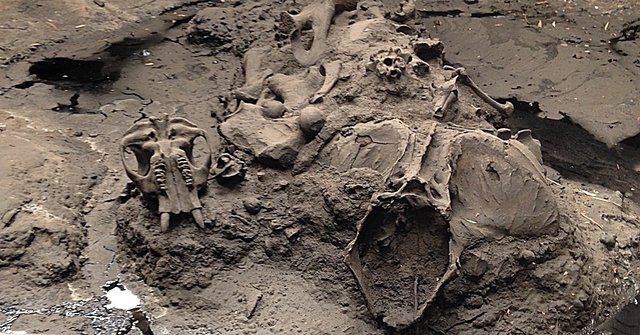
This explanation might be valid if the state of the bones did not testify that the ensnarement of the animals by the tar happened under violent circumstances. Oil from which the volatile elements have evaporated leaves asphalt, tar, and other bitumens. “As the greater number of the animals in the Rancho La Brea beds have been entrapped in the tar, it is to be presumed that in a large percentage of cases the major portion of the skeleton has been preserved. Contrary to expectations, connected skeletons are not common.” The bones are “splendidly” preserved in the asphalt, but they are “broken, mashed, contorted, and mixed in a most heterogeneous mass, such as could never have resulted from the chance trapping and burial of a few stragglers.” (Velikovsky 60-61)
Here, Velikovsky quotes Merriam (1911:212), Lull (1931:28) and McCready Price (1923:579). The latter’s catastrophism is clear, but Velikovsky has been selective in his quotation from Lull. The full passage in Lull’s Fossils reads:
The asphalt tends to work so that the bones are pulled apart, and one never finds a skeleton in articulation; but the individual bones are splendidly preserved. (Lull 1931:28)
Velikovsky’s catastrophist explanation does not simply envisage megafloods snatching up wild animals, mangling their carcasses and depositing them in the tar pits:
Were not the herds of frightened animals found at La Brea engulfed in a catastrophe? Could it be that at this particular spot large herds of wild beasts, mostly carnivorous, were overwhelmed by falling gravel, tempests, tides, and raining bitumen? Similar finds in asphalt have been unearthed in two other places in California, at Carpinteria and McKittrick; the depositions were made under comparable circumstances. (Velikovsky 61)
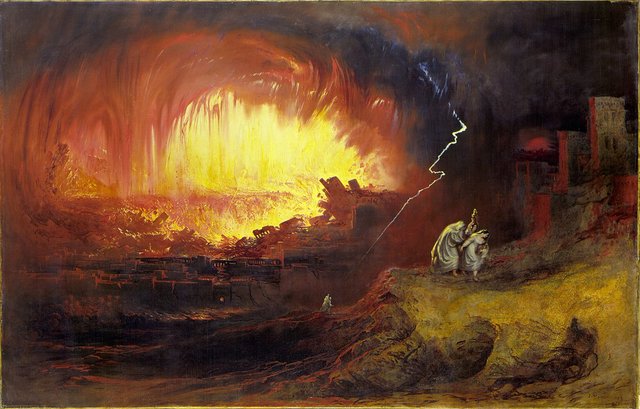
It is one thing to postulate that the animals were deposited in the tar pits by megafloods, or—as Price hypothesized—deposited in beds of sand and clay and preserved by oil seeping up from below. It is quite something else to postulate that the bitumen rained down from the sky. For this particular detail, Velikovsky turns to Brasseur’s Histoire des nations civilisées du Mexique and his translation of the Mayan Popul Vuh. In Worlds in Collision, Velikovsky also cited these same passages:
Popol-Vuh, the sacred book of the Mayas, narrates: “It was ruin and destruction ... the sea was piled up ... it was a great inundation ... people were drowned in a sticky substance raining from the sky ...
The Manuscript Quiché perpetuated the picture of the population of Mexico perishing in a downpour of bitumen: “There descended from the sky a rain of bitumen and of a sticky substance ... (Velikovsky 1950:54)
Velikovsky is surely mistaken on this particular point. Sodom and Gomorrah notwithstanding, it can hardly be denied that the bitumen at La Brea is formed by oil seeping up from the Salt Lake Oil Field, the reservoir of petroluem that lies beneath Los Angeles. It is not of Venusian origin (Velikovsky 1950:368-369). Nor did it fall from the sky.
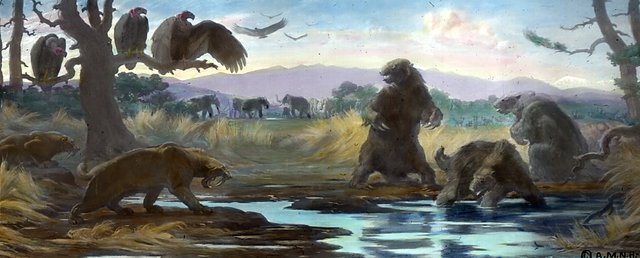
The fourth point which Velikovsky raises against the received opinion of entrapment concerns the huge diversity of species and genera found in the tar pits at La Brea:
In the time following the discovery of America this region of the coast was rather sparsely populated with animals; early immigrants found only “semi-starved coyotes and rattlesnakes.” But when Rancho La Brea received its skeletons “there lived an amazing assemblage of animals in Western America.” (Velikovsky 60)
Merriam himself is reduced to speculation to account for the large range of biodiversity in the La Brea assemblage:
The great quantity of remains in the asphalt is in itself an evidence that unusual attractions existed at this locality. Only on the supposition that the region was more than ordinarily alluring, and that animals were abundant in the surrounding country, can we account for the very large number of creatures that were trapped. (Merriam 1909:12)
Price too noted that some of the species excavated from the tar pits were not native to the region:
Moreover, the animals found here are such as have never lived in this vicinity since the great earth-changes took place. They comprise such animals as the great ground sloth, the saber-tooth tiger, both mammoths and mastodons, a camel, and species of horse and bovines which were extinct when the whites came here. Even a peacock, which is now restricted to the Asiatic tropics, occurs here, with a few other birds, some of which may have been caught in the tar, as they are such as sometimes visit this part of the world. But when the whites came to this region, there were scarcely any animals here, except a few half-starved coyotes and rattlesnakes wandering about among the manzanita and sagebrush. (Price 1923:579)
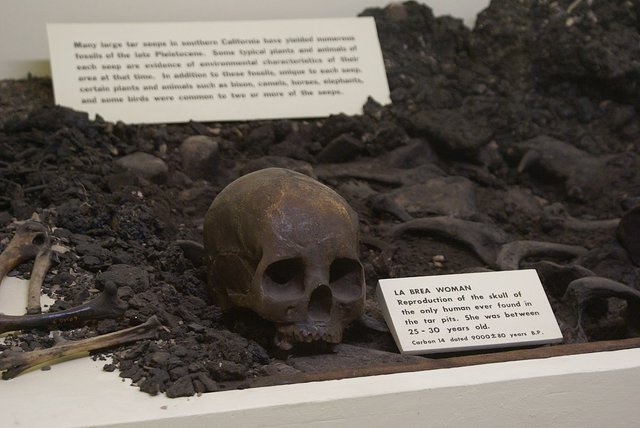
La Brea Woman
Velikovsky ends this section with a few words about La Brea Woman:
Separate bones of a human skeleton were also discovered in the asphalt of La Brea. The skull belonged to an Indian of the Ice Age, it is assumed. However, it does not show any deviation from the normal skulls of Indians.
The human bones were found in the asphalt under the bones of a vulture of an extinct species. These finds suggest that the time when the human body was buried preceded the extinction of that species of vulture or at least coincided with it; in a turmoil of elements the vulture met its death, as did possibly the rest of its kind, with the saber-toothed tiger and many other species and genera. (Velikovsky 61)
Since Velikovsky wrote these words, an intriguing discovery has been made which lends support to his thesis that the end of the last Ice Age was much more recent than conventional glaciologists claim. For decades it was believed that canine remains were associated with the remains of La Brea Woman:
In 1914, human remains were discovered in an asphalt deposit at Rancho La Brea, California. The skull and mandible of a small domestic dog (Canis familiaris) together with a number of shell and stone artifacts were found associated with the human skeleton and all appear to date at 9000 ± 80 years before present ... Dating of the human remains (UCLA-1292BB), using a left femur (LACMHC 1 323), at 9000 ± 80 BP (Berger et al. 1971) indicates that they are early Recent (Holocene) in age. By association, the age of the domestic dog and the artifacts is also about 9000 BP. (Reynolds 76 ... 80)
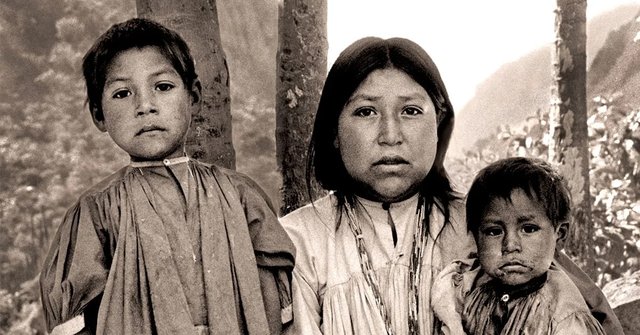
Reynolds believes that the woman and dog were formally buried in the tar pits, and not the hapless victims of entrapment. Others have theorized that La Brea Woman was murdered and thrown into the pits, or that she was cast into the pits alive in order to trap evil spirits that were possessing her (Reynolds 81).
In 2016, however, a discovery was made by a team of scientists led by anthropologist Benjamin T Fuller which casts doubt on all these theories:
We radiocarbon dated the domestic dog found associated with La Brea Woman at the Rancho La Brea tar pits (Los Angeles, CA) to determine the validity of this human–dog connection. The domestic dog yielded a radiocarbon age of 3125 ± 25 14C yr BP (3250–3400 cal yr BP) and La Brea Woman had a re-dated age of 9080 ± 15 14C yr BP (10,220–10,250 cal yr BP). This ∼7000-year offset dispels the hypothesis this was an intentional and ceremonial human–dog burial. (Fuller et al 56)
If the dog’s remains were misdated by about 7000 years, can we really put much faith in the radiocarbon age of the human remains? Before 2016, the close association between the two sets of remains was never doubted. Experts hypothesized about the circumstances which led to the remains ending up together in the tar pits, but no one questioned the claim that both domestic dog and woman were contemporaries.
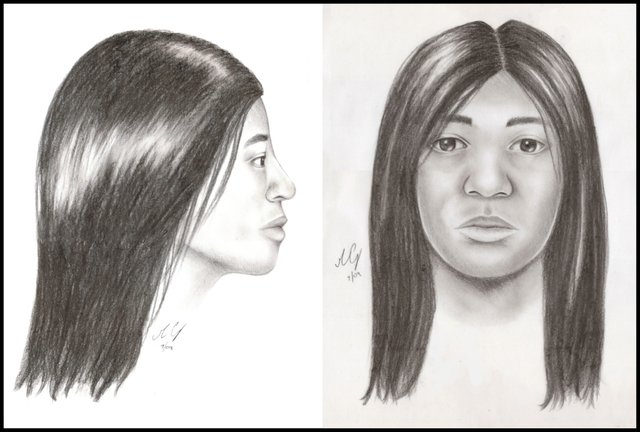
The redating of La Brea Woman to some time around 1400-1250 BCE (3250–3400 cal yr BP) could explain why the physiology of her skull was indistinguishable from that of contemporary Native Americans. It has even been claimed that the authorities at the George C Page Museum, where the remains are housed, removed them from public view when a facial reconstruction revealed La Brea Woman to be unmistakably Native American:
For years, the George C. Page Museum in Los Angeles has housed a 9,000-year-old set of bones that is said to be the only human remains recovered from the Rancho La Brea area, which is famous for its prehistorical tar pits. A cast of the skull was on display at the museum for a period but the museum withdrew it from exhibition about five years ago and placed it in storage along with the original bones.
Now, a former volunteer at the museum has published images of a facial reconstruction of the specimen against the museum’s wishes. She claims that the museum is scared that her reconstruction, in which the specimen is depicted as having Native American features, will encourage tribes to reclaim the bones for reburial.
“Obviously they’re not completely happy about it,” said Melissa Cooper, the former volunteer in question, when asked about going public with her work. She said that the museum won’t display her images out of fear that the Chumash, a Native American tribe, will attempt to take the bones away ...
Cooper, who has worked as a forensic artist for various institutions in California, said she completed her work on La Brea Woman a couple of months ago. The reconstruction consists of two-dimensional renderings of what the female’s face may have looked like based on the structure of the original skull. (Cooper said she used a cast of the skull, not the original, for her work.)
“There are hints within the skull that she may have had Native American features,” said Cooper. “You can tell by the way the nose was pointed and the depth of her eyes. Based on the skull, she had Asian features which does coincide with Native Americans.” (Los Angeles Times 24 November 2009)
If La Brea Woman and her dog died around 1400-1250 BCE, what does this tell us about the dating of the Last Glacial Age? Can we take any radiocarbon dates of such remote times seriously if they are subject to errors of up to 7000 years?
And that’s a good place to stop.
References
- Benjamin T Fuller et al, Tar Trap: No Evidence of Domestic Dog Burial with “La Brea Woman”, PaleoAmerica, Volume 2, Issue 1, Pages 56-59, Taylor & Francis Ltd, Milton Park, Oxfordshire (2016)
- Stephen Jay Gould, The Misnamed, Mistreated, and Misunderstood Irish Elk, Natural History, Volume 82, Number 3, Pages 10-19, The American Musuem of Natural History, New York (1977)
- Richard Swann Lull, Organic Evolution, The Macmillan Company, New York (1921)
- Richard Swann Lull, Fossils: What They Tell Us of Plants and Animals of the Past, The University Society, New York (1931)
- John Campbell Merriam, Triassic Ichthyosauria, with Special Reference to the American Forms, Memoirs of the University of California, Volume 1, Number 1, Pages 1-196, The University Press, Berkeley, CA (1908)
- John Campbell Merriam, A Death-Trap which Antedates Adam and Eve: The Discovery of a Californian Tar-Swamp that Holds the Bones of Extinct Monsters, Harper’s Weekly, Volume 53, Issue 2765, Pages 11-12, Harper & Brothers, New York (1909)
- John Campbell Merriam, The Fauna of Rancho La Brea: Part I, OccurrenceMemoirs of the University of California_, Volume 1, Number 2, Pages 197-213, The University Press, Berkeley, CA (1911)
- John Campbell Merriam, The Fauna of Rancho La Brea: Part II, CanidaeMemoirs of the University of California_, Volume 1, Number 2, Pages 215-273, The University Press, Berkeley, CA (1912)
- John Campbell Merriam, The Garment of God: Influence of Nature on Human Experience, Charles Scribner’s Sons, New York (1943)
- George McCready Price, Illogical Geology: The Weakest Point in the Evolution Theory, The Modern Heretic Company, Los Angeles (1906)
- George McCready Price, The New Geology, Pacific Press Publishing Association, Mountain View, CA (1923)
- Richard L Reynolds, Domestic Dog Associated with Human Remains at Rancho La Brea, Bulletin of the Southern California Academy of Sciences, Volume 84, Number 2, Pages 76-85, Southern California Academy of Sciences, Los Angeles (1985)
- John Thomas Scopes, The World’s Most Famous Court Trial: Tennessee Evolution Case, National Book Company, Cincinnati (1925)
- Chester Stock, John Campbell Merriam (1869-1945): A Biographical Memoir, National Academy of Sciences, Washington, DC (1951)
- Immanuel Velikovsky, Earth in Upheaval, Pocket Books, Simon & Schuster, New York (1955, 1977)
Image Credits
- La Brea Tar Pits: © Carolina A Miranda, Fair Use
- John Campbell Merriam: UCMP Archives, Public Domain
- Rancho La Brea (c 1910): Security Pacific National Bank Collection, Public Domain
- Richard Swann Lull: William Sergeant Kendall (artist), Yale University art Gallery, Public Domain
- Irish Elk (Natural History Museum, Dublin): © Sean MacEntee, Creative Commons License
- George McCready Price: Andrews University, Center for Adventist Research, Public Domain
- Scopes Trial (Day 7: Darrow Cross-Examines Bryan): Watson Davis (photographer), Smithsonian Institution Archives, Public Domain
- Charles-Étienne Brasseur de Bourbourg: Justin Winson, Narrative and Critical History of America, Volume 1, Page 170, Public Domain
- Histoire des Nations Civilisées du Mexique et de L’Amérique-Centrale: © LotSearch, Fair Use
- Columbian Mammoth Trapped by Asphalt at La Brea Tar Pits: © Mark Hallett (artist), Paleoart, Science Photo Library, Fair Use
- An Agglomeration of Fossils from La Brea: © 2021 Encyclopædia Britannica, Inc, Fair Use
- La Brea Tar Pits: © John Sibbick (artist), Paleoart, Fair Use
- La Brea Fossils (in situ): © 2021 Locations of Lore, Fair Use
- The Destruction of Sodom and Gomorrah: John Martin (artist), Laing art Gallery, Newcastle upon Tyne, Public Domain
- Rancho La Brea Tar Pool: Charles R Knight (artist), The Jesse Earl Hyde Collection, Case Western Reserve University, Cleveland, OH, Public Domain
- Replica of La Brea Woman’s Remains: © Franko Fonseca (photographer), Santa Barbara Museum of Natural History, Creative Commons License
- Chumash People: Source Unknown, Public Domain
- A Facial Reconstruction of La Brea Woman: © Melissa R Cooper (forensic artist), Fair Use
